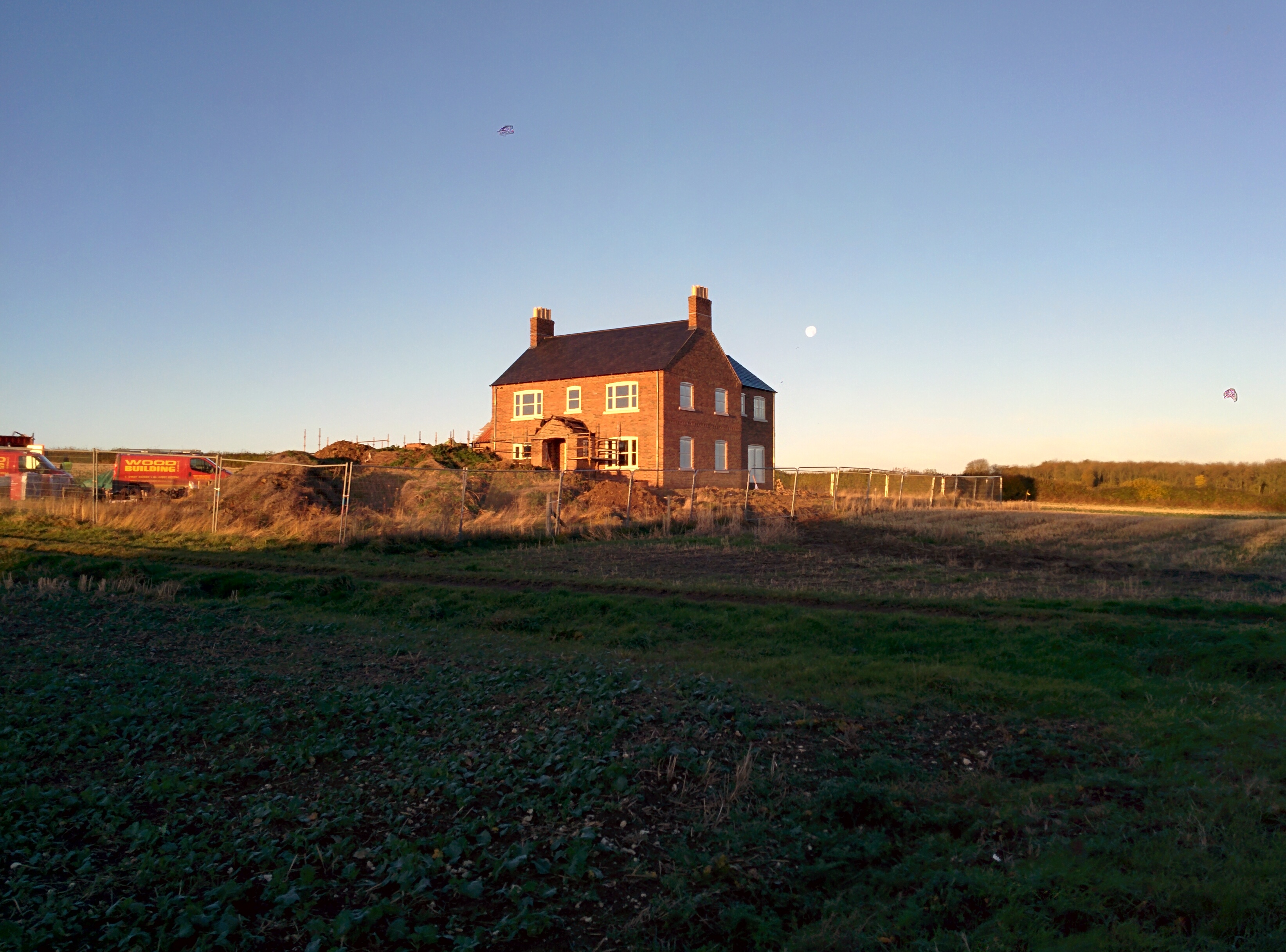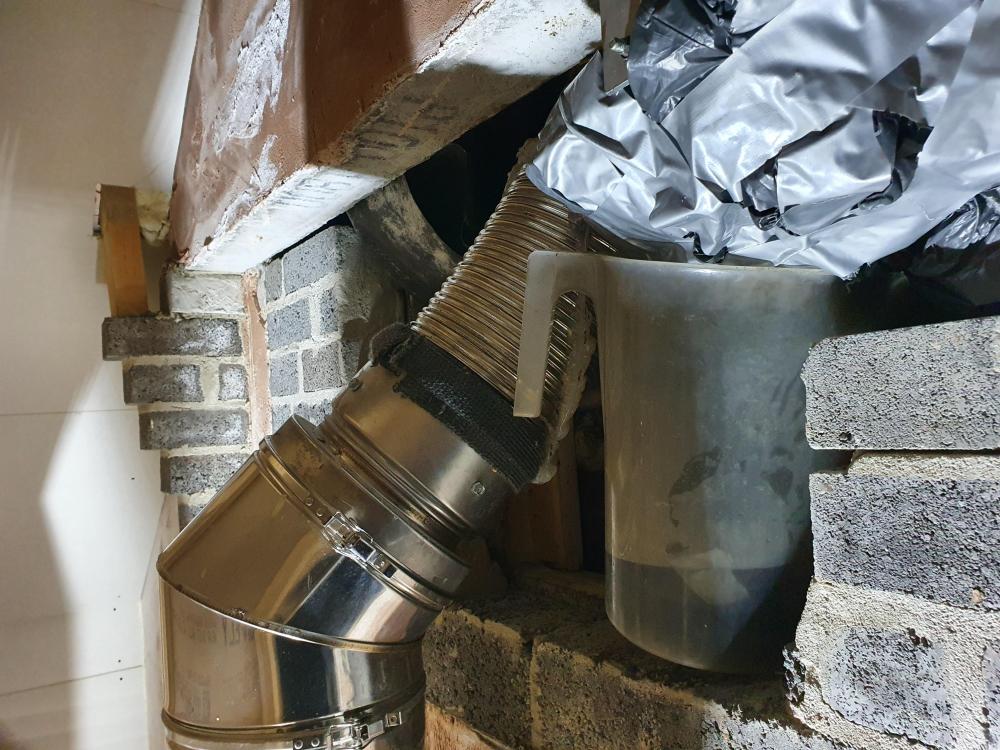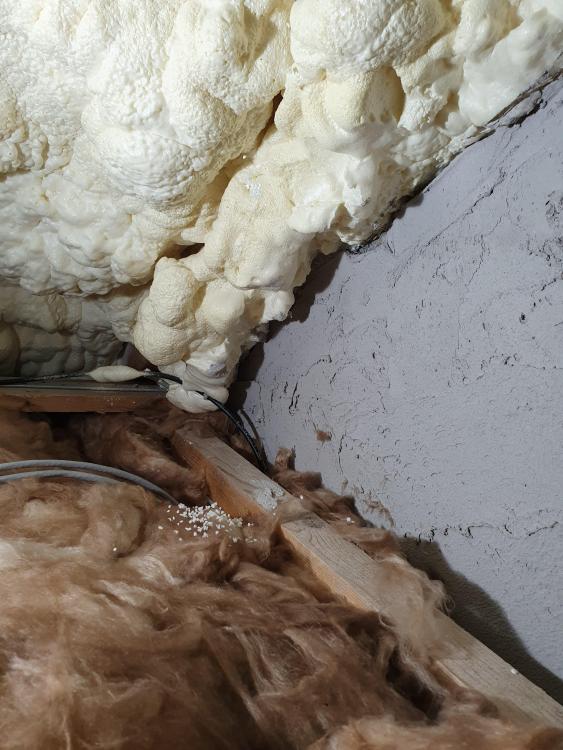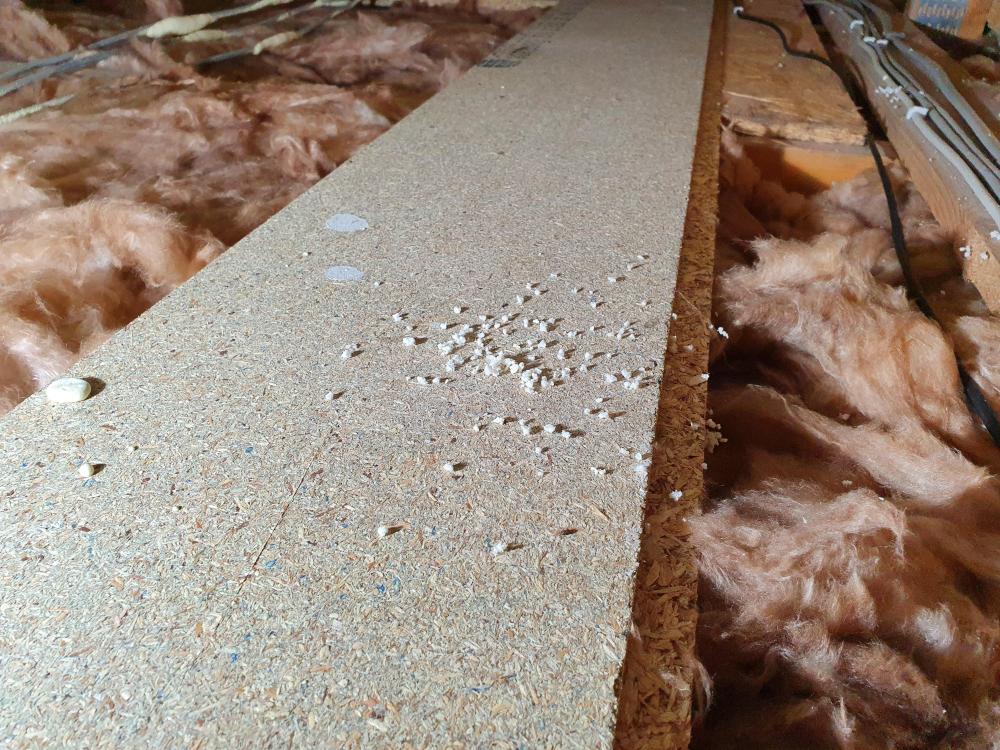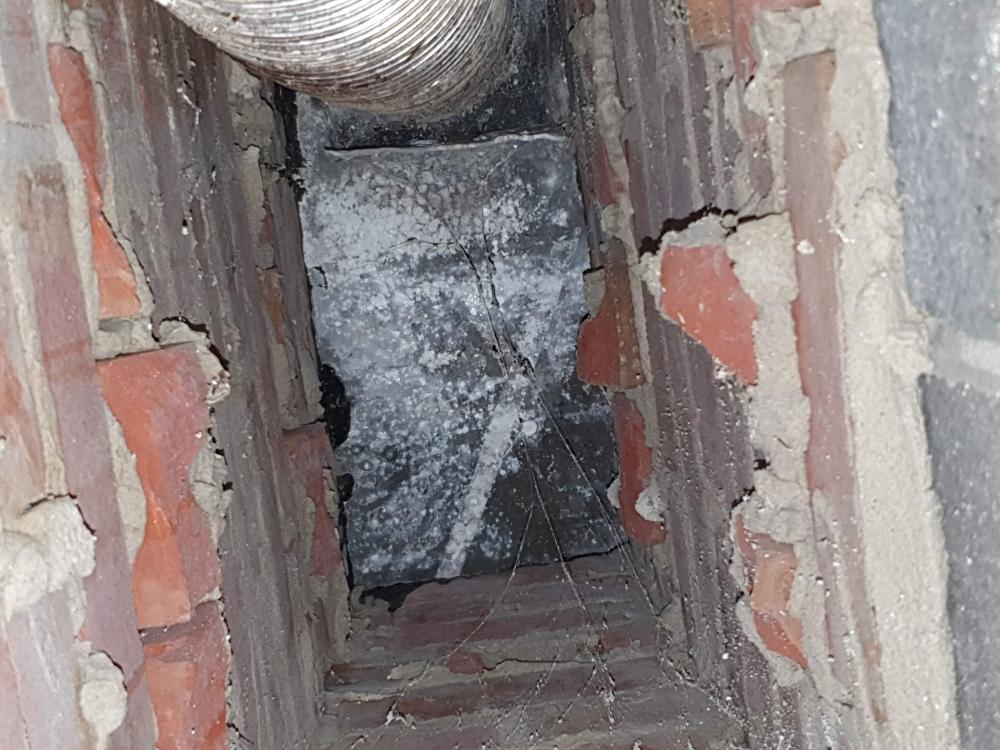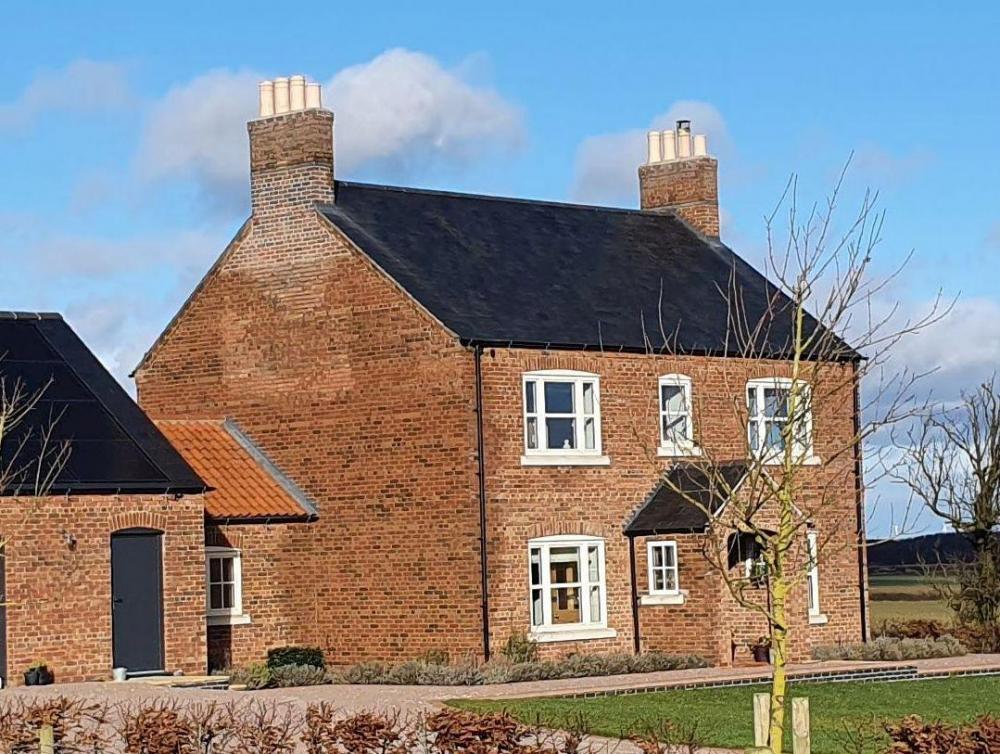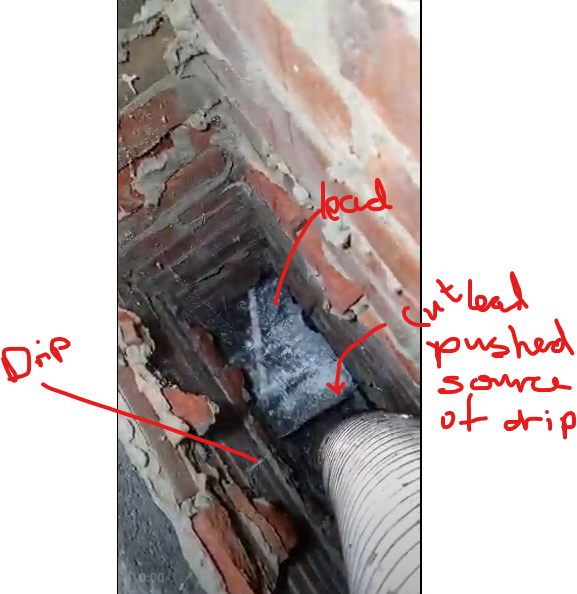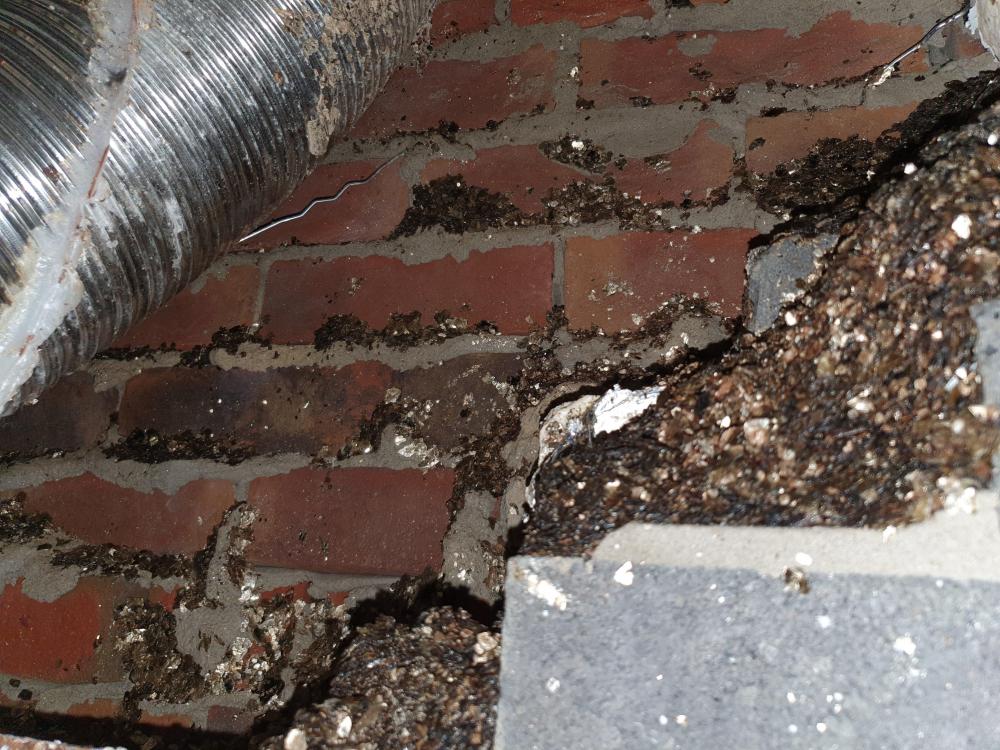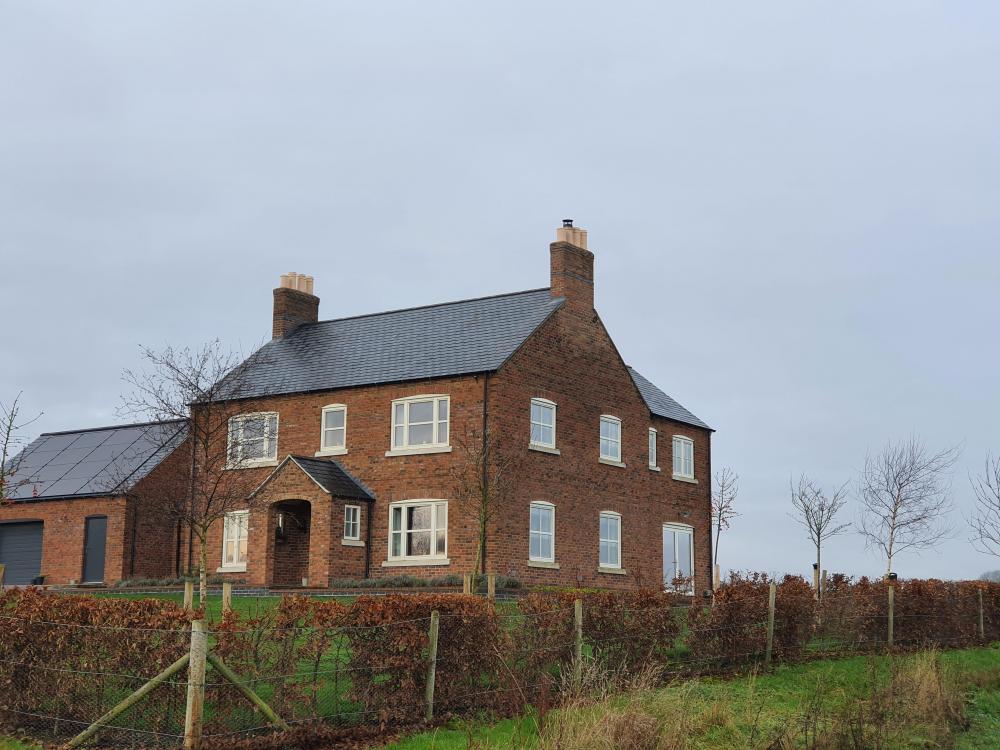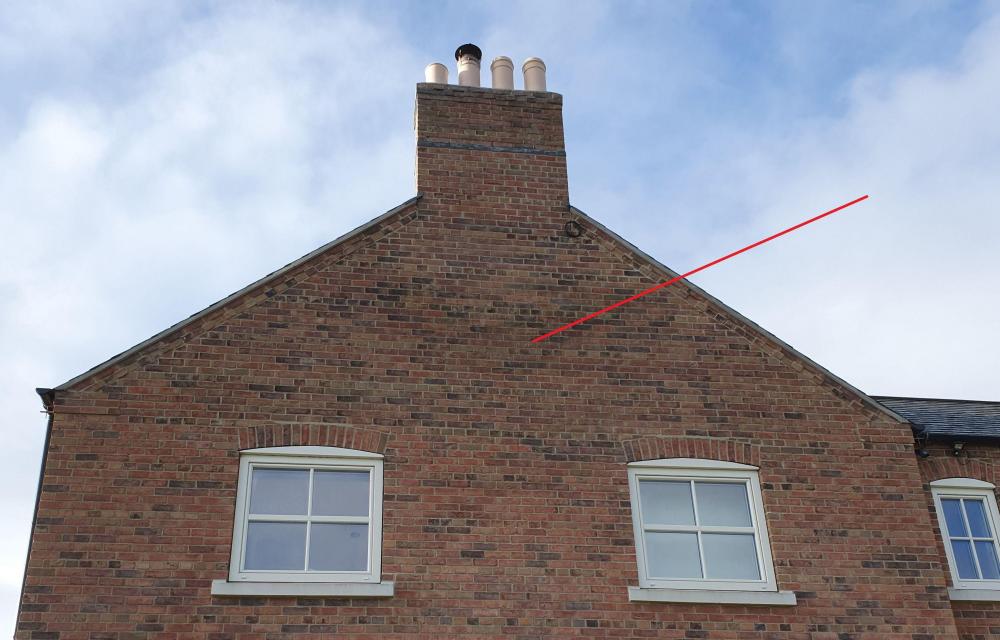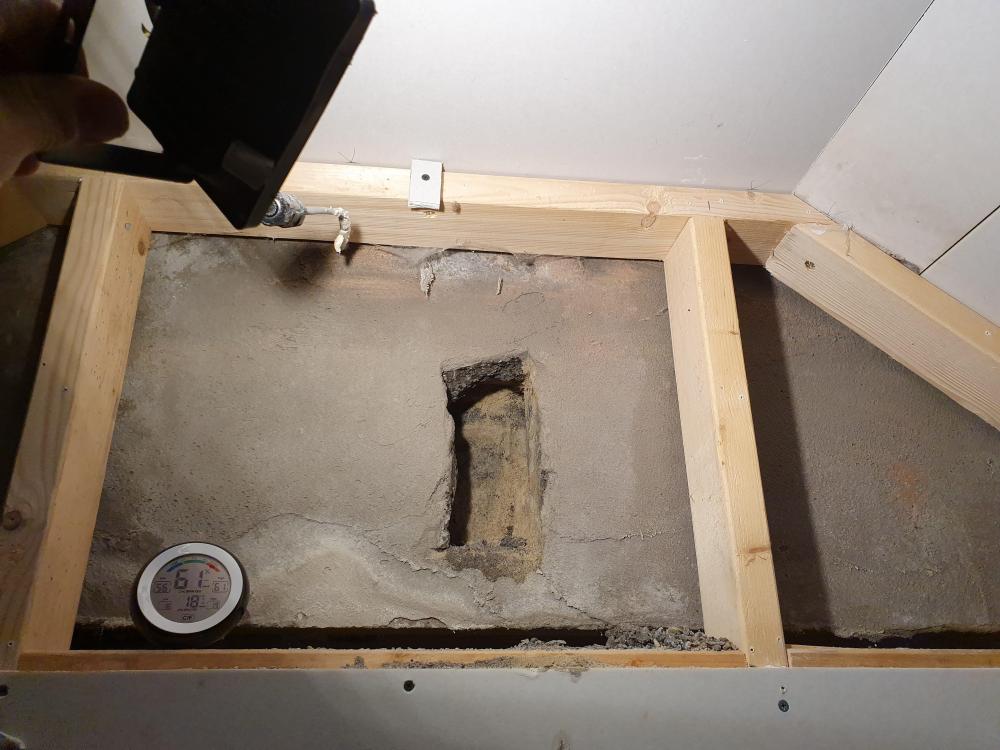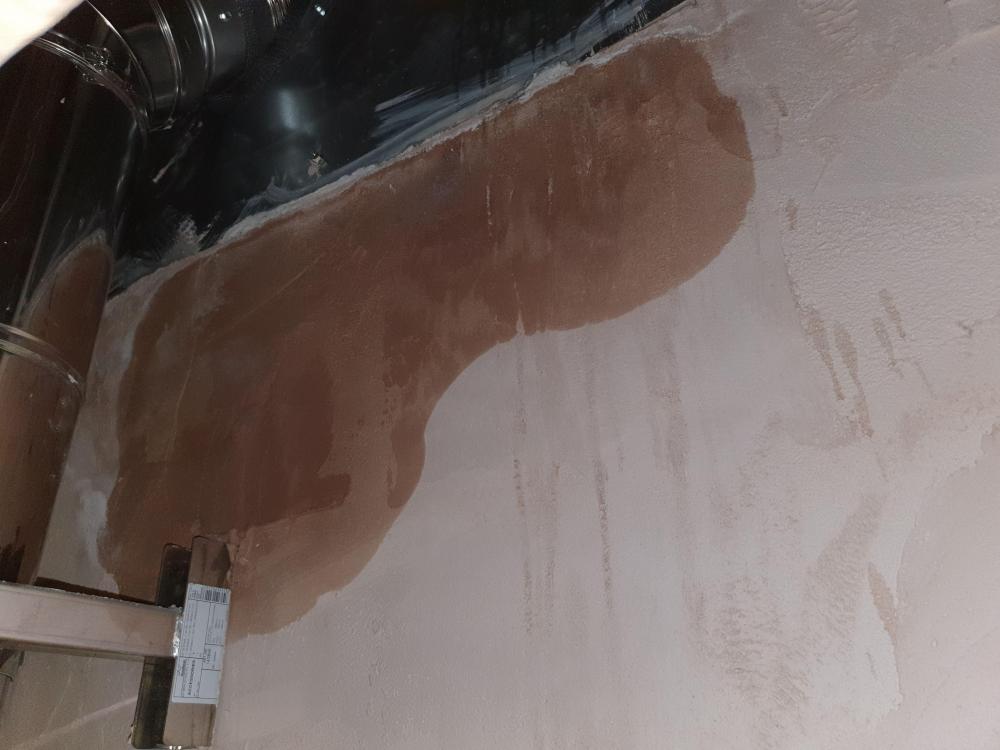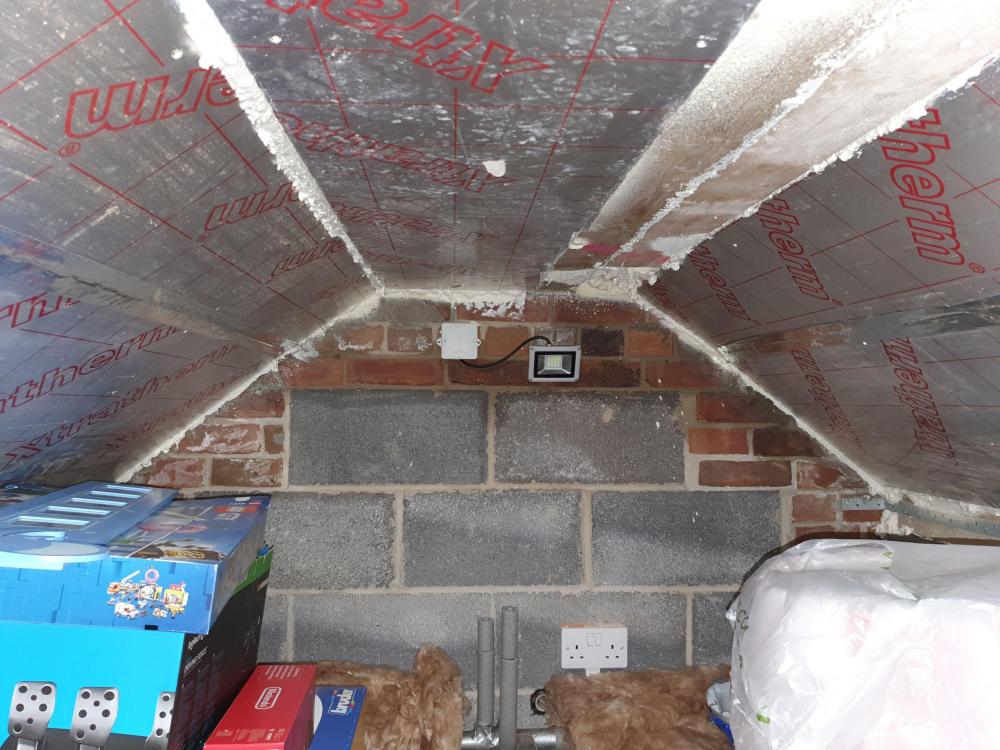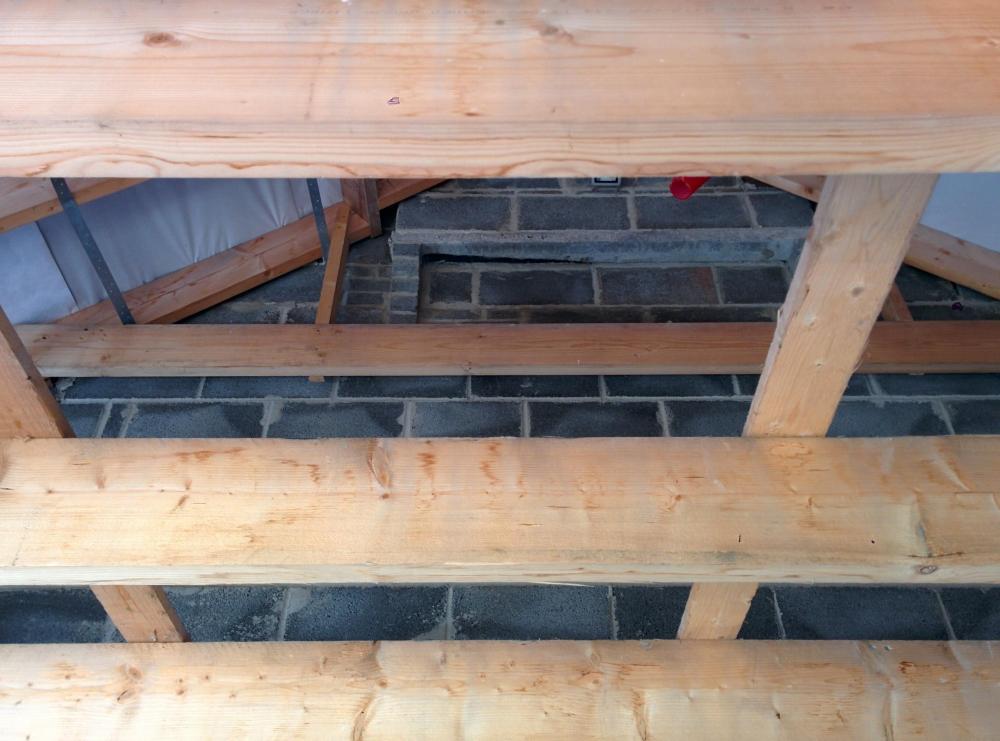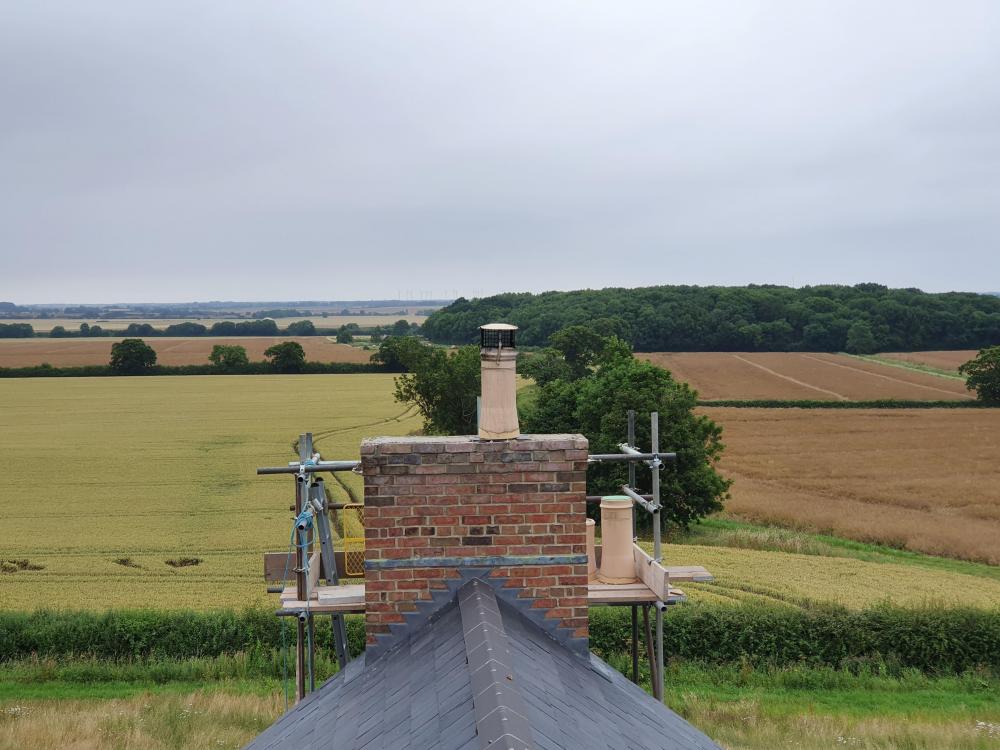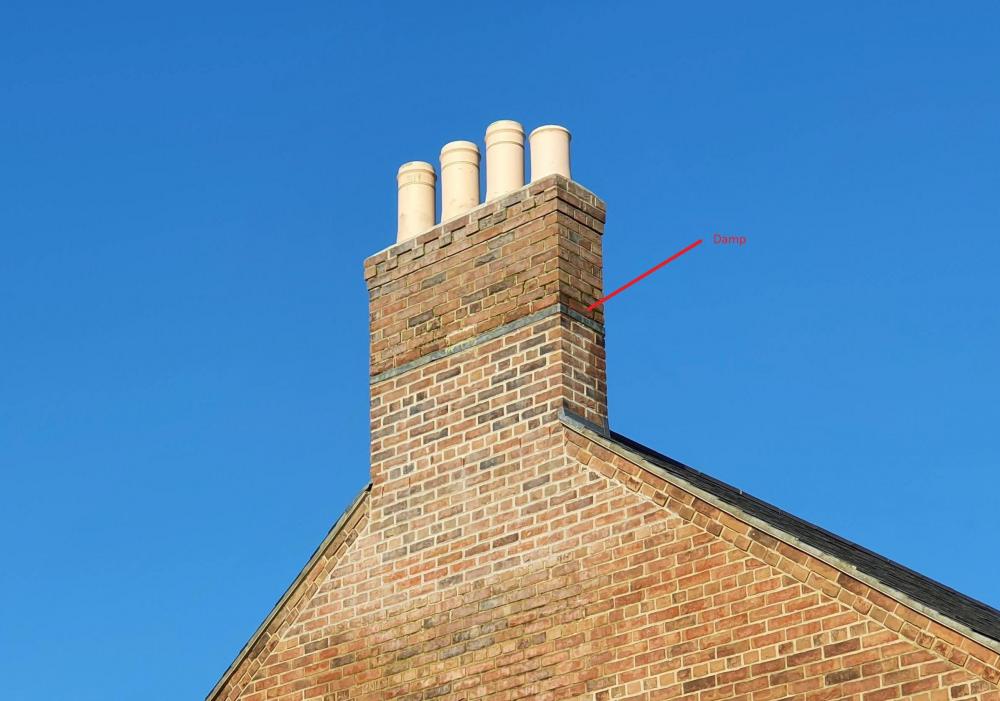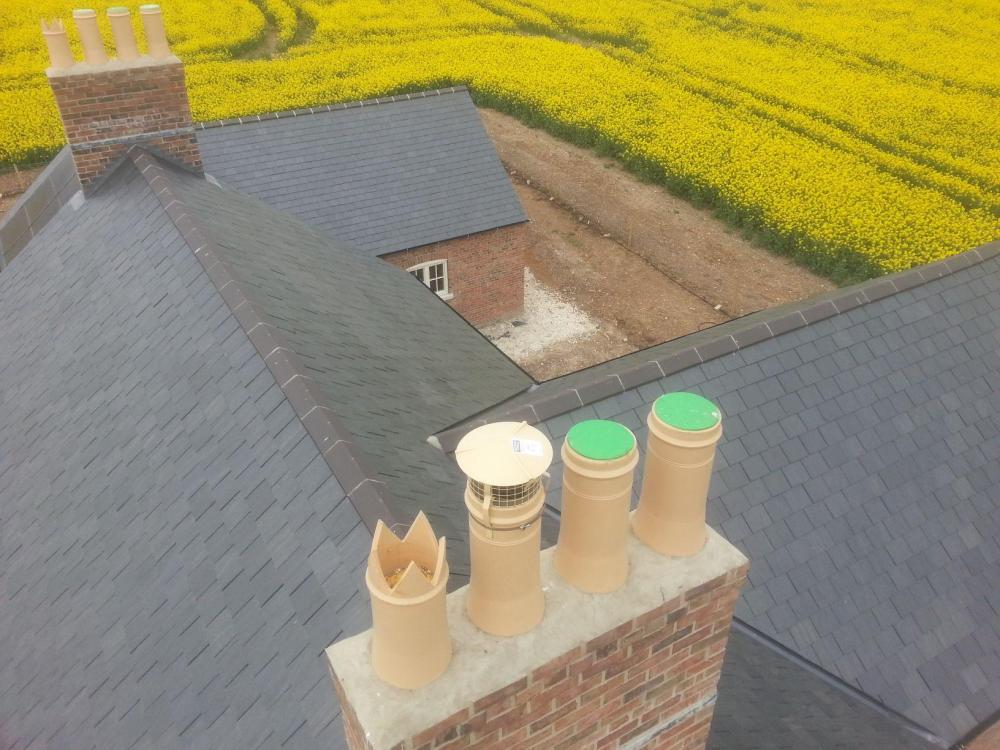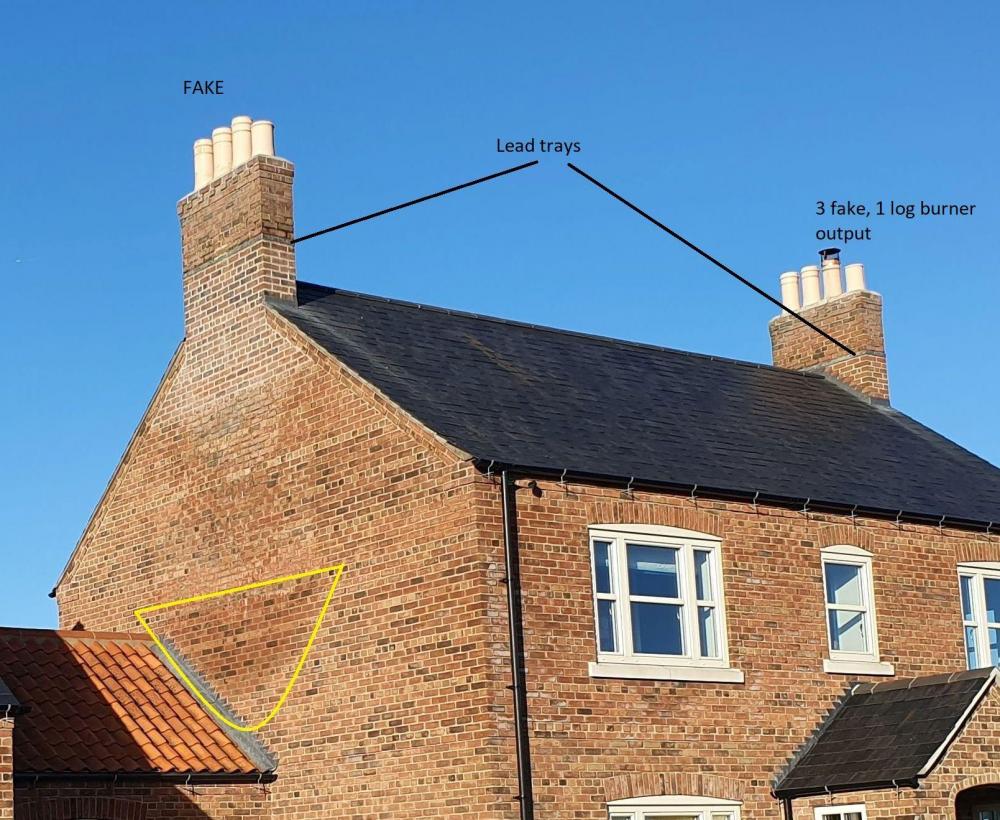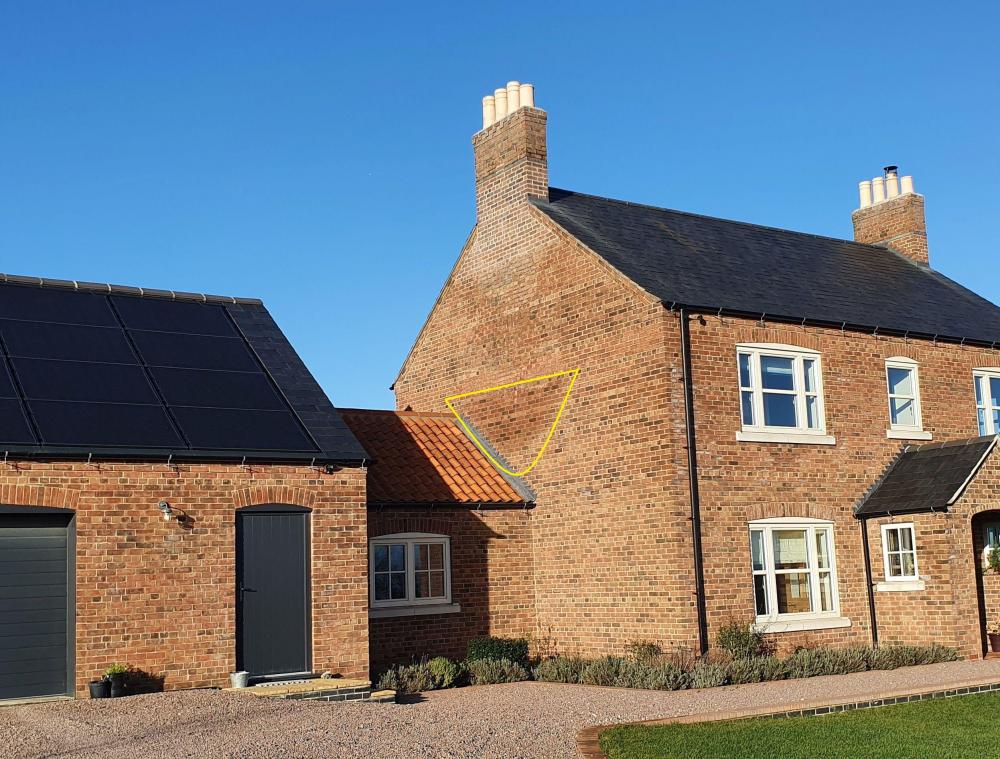-
Posts
746 -
Joined
-
Last visited
-
Days Won
2
Everything posted by readiescards
-

Brickwork damp patch after prolonged heavy rain
readiescards replied to readiescards's topic in General Construction Issues
Light shower overnight and 0.5 litre collected on East stack so assume same will have entered West stack. ? -

spray foam Spray foam - do mice like it?
readiescards replied to readiescards's topic in Heat Insulation
Traps installed now -
We heard some 'funny' noises this morning in the attic. No smell of mice and no droppings but odd little patches of broken foam, nibbled? Anyone experience of mice living in spray foam or using it for nest building? Thanks Paul
-

Brickwork damp patch after prolonged heavy rain
readiescards replied to readiescards's topic in General Construction Issues
Looking up from the attic into the live stack at the underside of the lead I can see drips of black sealant (I guess). Is it normal practice to apply sealant to the brick-lead joint? thanks -

Brickwork damp patch after prolonged heavy rain
readiescards replied to readiescards's topic in General Construction Issues
(The East stack has the log burner flue) Today the We st stack soaking of the gable end bricks has now got so far it has breached into the living space both in the attic and in the utility room (the one below the red tiles): You can see the bricks above the lead tray on the West stack are very very damp to the point mould is growing in the mortar. Below the lead tray is a patch of brickwork that has been repointed and had a water proofing applied (which has run down the wall creating the horrible looking square patch). The soaked bricks are now onto the utility wall I think considerable water is being captured in the 'sealed' void above the lead tray of West stack (which I believe is an empty single brick wall void) that is some how breaching the lead tray and various cavity trays below that. Question: * I've been told the flaunching is absorbing rain - is there a good reason for the flaunching not being regular water proof concrete? * discussion above suggest this void should be ether double skinned/insulated. Rather than using vermiculite (which once damp collapses and is damp for ever) could it be filled with rigid insulation (Xtratherm type stuff) - would that be a 50+ year solution? Thanks as always - the Buildhub continues to be a life-saver for me -

Brickwork damp patch after prolonged heavy rain
readiescards replied to readiescards's topic in General Construction Issues
Yep I think so, pushing the cut flap down seems to be the worse option available! -

Brickwork damp patch after prolonged heavy rain
readiescards replied to readiescards's topic in General Construction Issues
Correct: 3 pots are sealed with a fibre glass cap (assuming the cap is still there), they sit on a recessed paving slab (I think). The live pot has a flexible tube sealed to its upper lip, the live pot sits on some slate supports. The whole lot is then flaunched (to secure the pots I assume). There are no weep holes in the flaunch. Under the flaunch is a large single brick void. 11 brick rows down from the top is a single solid sheet of lead, with tiny weap holes (I've never been able to confirm if water comes out of them - and looking just now while the dripping is happening inside I can see no evidence of water running out) The builder cut a square hole in this sheet and pushed the flap down(!) so the log burner installers could run the log burner flexy flue up to the live pot. This hole was then sealed up from below, it was later also further sealed up from above. This seal is currently dripping. It is dripping because a considerable amount of water is getting into the stack void above the lead - currently the drip is 5 litres in last 24 hours so gawd knows how much water is sitting in the void. Many of the bricks above the lead tray have green mould growing up them now from being constantly damp. The builder says not his fault. Questions: 1. how many litres of rain water should a void be expected to capture in a normal storm? A few cc? Less than 1 litre? More than 5litres? (I personally assumed practically nil) 2. should I be able to see evidence of water coming out of the weap holes (e.g. after 3 years maybe staining on the lead) as I can't 3. should an air-brick be installed in this cold void (it was originally filled with vermiculite but this got wet from poor chimny pot sealing so was removed) 4. would the lead sheeting sag under its own weight so directing the collected water to the centre (and therefore around the flue)? (from below I can not see evidence of sagging but only needs to be a few millimetre to create an issue) Thanks all -

Brickwork damp patch after prolonged heavy rain
readiescards replied to readiescards's topic in General Construction Issues
Well finally done this. Removed the steel plate sealing the flu to the stack to find all the vermiculite behind was completely soaked. The strange V pattern on the outside of the gable end exactly matching the distribution of the wet vermiculite (it was basically keeping the bricks wet). Removed all that to find water dripping in from the lead tray to flu joint. I collected around 3 litres in the last 24 hours (and it was only raining for a few hours). So I can understand making the flu to lead tray joint can be tricky to obtain a 100% long life water proof joint and the odd drip might get through, what I can't understand is why there is multiple litres of water in the void above the lead tray and underside of the sealed pots. Going to need the stack above the lead rebuilding I fear -

Brickwork damp patch after prolonged heavy rain
readiescards replied to readiescards's topic in General Construction Issues
Do you have a photo of this? Thanks -

Brickwork damp patch after prolonged heavy rain
readiescards replied to readiescards's topic in General Construction Issues
No detail architect drawing of that area, the architect drawings were for planning approval only and the builder just 'built it'. I will try to create a diagram from my understanding of what there is. Although the waterproofing has been applied to a bit of the chimney as a last resort I do still feel it was a last ditch attempt as nothing else seemed to work and it is indeed hiding the real problems -

Brickwork damp patch after prolonged heavy rain
readiescards replied to readiescards's topic in General Construction Issues
I've previously been advised applying an external waterproofing is merely a sticking plaster and last resort as really it masks the true issue plus it only has a finite life span, so kicking the can down the road as such. Is a waterproofing such as Stormdry, a permanent (25-50 years) solution that does not cause any knock on issues? Thanks -

Brickwork damp patch after prolonged heavy rain
readiescards replied to readiescards's topic in General Construction Issues
Right hand stack yesterday, you can see below the lead tray where the brickwork has been painted with moisture proofing - the bricks looking dry. But below that the bricks look very wet - a few days after the rain the rest of the gable will dry normally but a strange V shaped patch of brickwork will remain wet for a few more days. -

Brickwork damp patch after prolonged heavy rain
readiescards replied to readiescards's topic in General Construction Issues
One half of both stacks (about 10 brick courses below the lead tray has been coated by some water proofing - which has made the outer wall look an ugly patch work of differences (especially with part of the stack being rebuilt, in a previous attempt). The waterproofing/rebuild/insert of another cavity tray of the left stack has stopped damp coming into the attic space. There are weep holes above the lead tray and cavity tray. I'm told the soaked looking brickwork below the water proofing is simply the water that has run off the water proofing but I find that hard to believe that it can then enter the utility attic space. Prior to rebuilding the stack an investigation was made into the left stack and this reveal wet internal blockwork. I don't know what the lead tray is sat on DPC with a weep hole directly below the pots would seem a good idea. The right hand stack continues to have internal damp issues (it has had the pots removed, resealed and reseated) - that is the big damp photo (I don't know how to place photos in the text where I want them, sorry) The attic photo with the blue box shows the damp from the left hand stack soaking into the utility attic space. The stepped flashing has been inspected, not by me, but I'm told is in good order. Yes both stacks are corbelled - last photo. -

Brickwork damp patch after prolonged heavy rain
readiescards replied to readiescards's topic in General Construction Issues
There is a cavity tray (thanks for correct term) higher up the wall but nothing directly over the utility roof line. The dummy pots sit on concrete tiles built into the top lip and then surrounded by a concrete bed. Below that tile is a void and below the lead tray is another void. Best picture I can find: Any moisture that the pots get internally should be held by the tile I think the builder said, though how the brick course above the lead tray is so damp I've no idea: -

Brickwork damp patch after prolonged heavy rain
readiescards replied to readiescards's topic in General Construction Issues
Yes I would call them 'standard' clay pots. They have been capped with a fibre glass lid and sealed as per this image. Since the image was taken the shorter king pot has been de-crowned and also likewise capped and sealed (during this process the existing lids and seals were confirmed to be in good order). Question can the clay pots act as 'moisture gatherer' - as I'm likewise wondering if the uninsulated void below the lead tray acts as moisture gatherer - i.e. the damp in the air is able to penetrate the bricks and/or clay pots and build up to significant levels within the void. (There are damp trays in both stacks below the lead tray designed to dump any water that gets inside the stack through weap holes onto the outer edge). -

Brickwork damp patch after prolonged heavy rain
readiescards replied to readiescards's topic in General Construction Issues
Both stacks only extend into the house attic space i.e. they do not run all the way down to the ground floor. The right hand stack (when viewing the house from this aspect), has a twin wall log burner tube liner passing through into it. Not sure whether you would call them fake/false stacks? -
Looking for a 'Defect Diagnosis' expert to investigate/explain the issues with my chimney stacks (and other related matters) on my Lincolnshire new build: Any recommendations please? (the architectural surveyor I had assess the property half way through the project has moved away and is not really interested)
-

Brickwork damp patch after prolonged heavy rain
readiescards replied to readiescards's topic in General Construction Issues
So the soaked looking bricks (in the yellow area) actually extends into the attic space of the clay tiled roofed utility ? -

hass io Anyone using Home Assistant
readiescards replied to readiescards's topic in Networks, AV, Security & Automation
I have hardwired ethernet cabling to a central point, so luckily no need for lots of devices to make a mesh network. I've not checked the central RPi power consumption but don't believe it to be significant. Ditto I don't have a landline - all comms over GSM 3g/4g Happy to try and help with Mosquitto, just PM me if you wish, though I'm no way an expert! -

hass io Anyone using Home Assistant
readiescards replied to readiescards's topic in Networks, AV, Security & Automation
Indeed I have Mosquito running on the Hassio RPi Home automation central server. I guess you can run Mosquito on any suitable device on a mesh network - not sure what benefit you gain though -

hass io Anyone using Home Assistant
readiescards replied to readiescards's topic in Networks, AV, Security & Automation
I'm still plugging away with it - currently trying to auto the MVHR boost using a temp sensor in the drain pipe of my bath/showers. One RPi records the temps, sends a MQTT message to the Home Automation server (Hassio on a RPi) which will process these temps to decide if the MVHR should boost, the Hassio system then creates another MQTT message that is subscribed to via another RPi that is connected to the MVHR boost option via a replay. RPi used just because the wifi signals are weak in the attic and I have a POE ethernet so can power a microcontroller over POE direct and I have some unused RPi's - a couple ESP32 would probably have been very capable. For sure Hassio is powerful but it does need some time to learn how to work with it if you want to extend it beyond just added a few plugins for your regular household items -

hass io Anyone using Home Assistant
readiescards replied to readiescards's topic in Networks, AV, Security & Automation
I installed a plastic duct in a gravel trench and ran a length of twin core mains, as it was quite a distance and I didn't want a voltage drop from the PSU (rather than using a much thinner bell wire) -
I was running a second hand diesel generator alongside my 8.8kV PV setup, the original plan being that generator would kick in to charge the battery bank after a few days of dullness. My (2017) research into wind turbines suggested they needed to be high/large to be effective and a potential large consumer level wind turbine would need to be taken down if the winds got extreme!
- 34 replies
-
- electricity
- off-grid
-
(and 2 more)
Tagged with:
-

hass io Anyone using Home Assistant
readiescards replied to readiescards's topic in Networks, AV, Security & Automation
That would be a huge list! Having said that I've still not got my wifi enabled dishwasher connected to Home assistant - out of my hands as waiting on Miele to give me my Meile API key ? -
Nice to re-visit this topic. In the end I bit the bullet and paid the £24k + other costs to get connected. In 2017 I just felt the Lithium batteries technology and price point was not in my favour. Now, end of 2020, I think it would be much more viable to go off grid - though I've not kept abreast of the offgrid technology - as the Lithium battery price has dropped. Having paid out such a huge amount to connect I won't be going off grid though - I need to use a lot of electric to justify the connection! Oh and when we had the house valued 2018 the surveyor thought not having an electric connection would knock £26k of the value, irrespective of any investment in batteries, as very few people would want a non-mains house
- 34 replies
-
- 1
-

-
- electricity
- off-grid
-
(and 2 more)
Tagged with:

